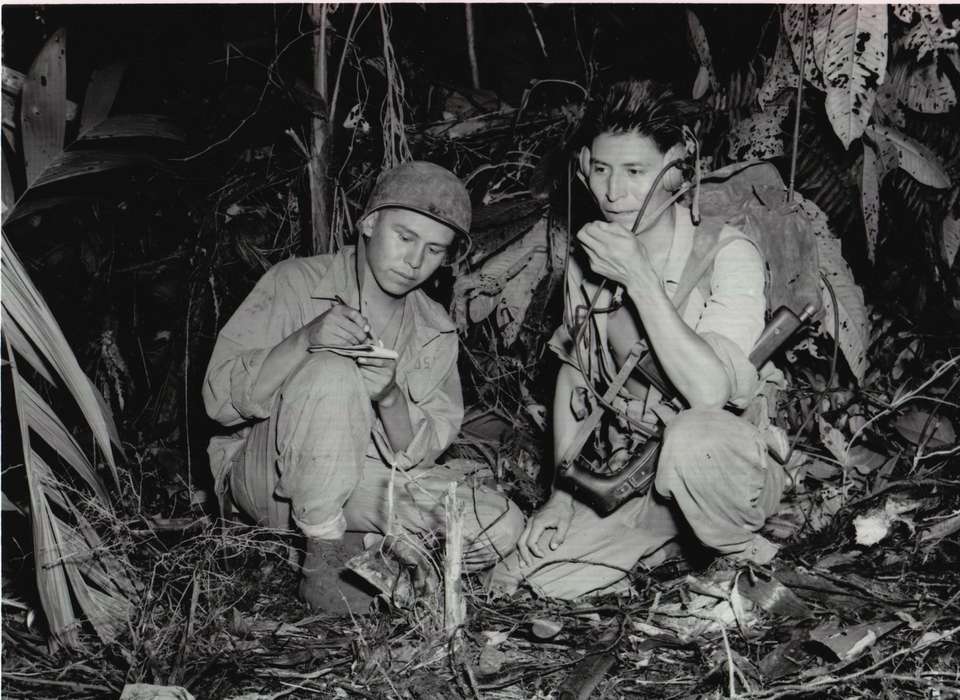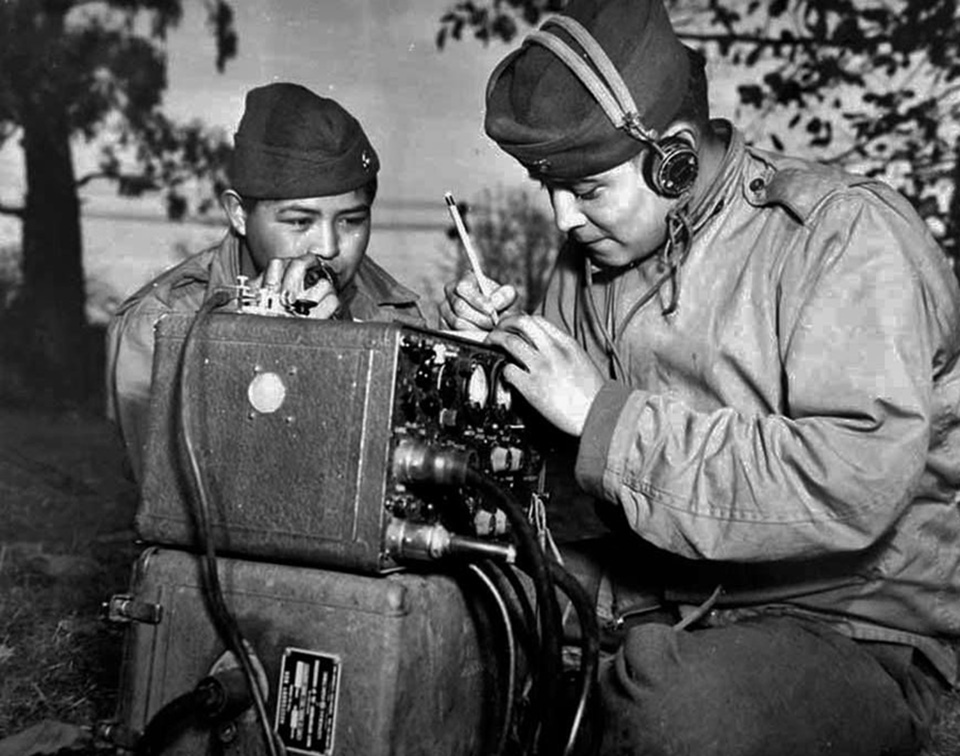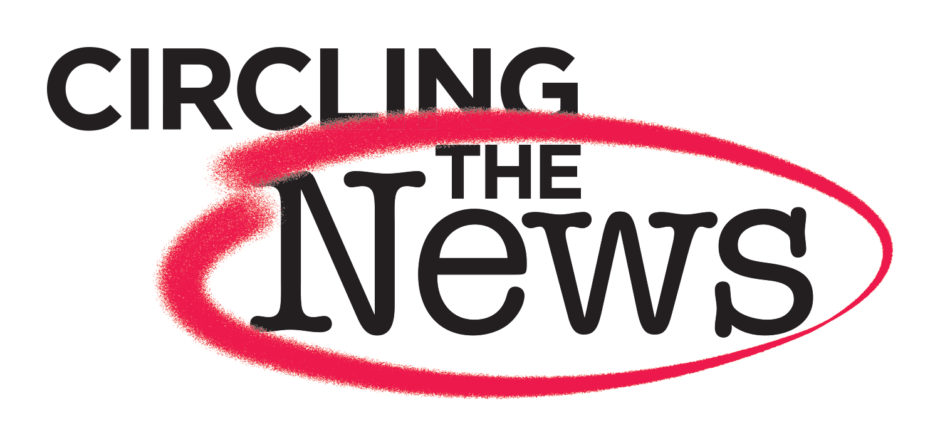
The Navajo Code Talkers devised a code, based on their language that the enemy could not break. Photo: National World War II Museum
By REECE PASCOE
Former U.S. President Ronald Reagan designated August 14, as National Navajo Code Talkers Day. In his 1982 declaration, Reagan said this is, “a day dedicated to all members of the Navajo Nation and to all Navajo Americans who gave of their special talents and their lives so others might live.”
Throughout the history of warfare there has always been a need to accurately and efficiently communicate on the battlefield. Communication may be the single most important resource any army can possess: to know beforehand what one’s enemy is going to do or where they will be.
During WW1, from St Etienne to Aisne, it became obvious that the Germans were listening to the Allies communications. After they had dug in, they would be hit with enemy shells.
They had two Native Americans that spoke multiple languages, including Comanche, and decide to utilize their skill set. They successfully ordered a retreat and subsequently an assault. Though the language was lacking important military terminology it was an important steppingstone that would eventually change the world.
On December 7, 1941, Japanese planes destroy Pearl Harbor. With that action, America has officially entered World War II.
How to keep communications between Allies, and out of the hands of the enemy becomes an overwhelming concern.
As a child, Philip Johnston learned to speak “Trader” Navajo, which allowed him to “get around” but not hold a conversation.
After reading a report on the army using the Comanche’s language it gave him an idea about using the Navajo language because “The nature of the language is such that if it is not learned from birth, fluency is nearly impossible to attain.”
Johnston contacted Major E. Jones, who told Major General Clayton B. Vogel of the possibility of using of Navajo. A test was conducted, and it proved fruitful. Vogel convinced Commandant Thomas Holcomb about the use of the language that could hide American troop movements. After approval from various departments Vogel went to work.
The first wave of Navajo recruits was known as the “first 29.”
It was decided that they would become Marines first, then they would become a part of the signal/communication core.
During basic training there was hardly ever any racial preadjust against the 29. They were occasionally called chief, but since the Navajo never did have chiefs, that pejorative was chalked up as ignorance.
The 29 were never allowed to take leave, and never went home until the war was over – excluding injures.
They graduated boot camp and arrived at Camp Elliott, there they were put in a room and explained they were to create a code using Navajo. They had four rules in the construction of the code.
- construct an alphabet
- choose words that are accurate equivalents
- choose short terms for rapid transmission
- memorize all terms
It was suggested to use terms that were familiar to them that could represent military terms. The first was ant, for the letter A. (wol-la-chee), Apple (be-la-sana) was also used. For the letter A America, the phrase used was (ne-he-mah) which means our mother. In total they had to memorize more than 500 terms.
The men finished the alphabet and started working on terms for military rank, airplanes and ships. It was such a complicated process that one word could take up to four hours to develop.
Even if someone could translate the code they would be lost, because it was a code within a code. For example: This was what needed to be transmitted.
“Request artillery and tank fire at 123B, Company E move 50 yards left flank of Company D.”
This is what the Navajo would say in their native language, so even if one could speak Navajo this is what they heard.
“Ask for many big guns and tortoise fire at 123 Bear tail drop Mexican ear mouse owl victor elk 50 yards left flank ocean fish Mexican deer.”
To test out the code, the men were to transmit a message over radio while a runner was to deliver the message. They completed the message every time without a mistake, it was so perfect the instructors thought that they were cheating somehow.
The normal code used by Marines was an upgraded shackle code used the transmission of numerals and had been used since the Civil War. On average it would take about four hours to send and decipher the code.
With the Navajo’s code, it took less than two minutes.
Time made a big difference, especially when fighting the Japanese.
The Japanese have a long tradition of honor, Bushido or Warrior, upholding the way of a warrior to fight with honor and or die with honor.
During WWII, banzai served as a battle cry and kamikaze pilots would shout “banzai” fearless of their imminent death, to uphold the Bushido code, to bring honor upon oneself and their family.
The Japanese got so fed up with the code that they resorted to yelling on the radio in hopes of disrupting the code.
It was extremely dangerous for the Navajo in battle due to the complexation of their skin, they were routinely mistaken for the Japanese.
The Japanese had a lucky break that could have changed the war, when they captured a Navajo Prisoner of War, Joe Kieyoomia a Navajo. The Japanese thought the captive was Japanese and took a couple months to realize that Kieyoomia could speak Navajo. But when he listened to the communications, the code was incomprehensible to him, too.
The Army and Marines are like brothers never wanting to share their new toy. In this case it was the Navajo Code Talkers.
The Army asked the Marines about using the Navajo and in true fashion, the Marines replied “I don’t know what you are taking about.” Though the Navajo were not the only Native Americans that played a crucial role in the defeat of evil, they were the only ones fighting in the Pacific Theater.
Even though their safety was of the upmost importance, accidents do happen. Harry Tsosie was in the first 29, the only Navajo to be killed by friendly fire, and the only one of the original 29 to be killed.
The Navajo code talkers was such an important and vital resource that the military kept their service and records hidden for 24 years. This made it tough for the Native Americans to transition back state side, many not being able to claim benefits because there was no record of them.
To this day no one knows how many Navajo served because of the secrecy involved with their mission.
Code Talkers were publicly recognized for the first time in June 1969. Reagan honored them in 1982. Samuel Sandoval, 98, one of the last remaining Navajo Code Talkers died in July. Only three are still alive today: Peter MacDonald, John Kinsel Sr. and Thomas H. Begay.
Davey Baker, a Marine, who served with the Navajo, said of the Code Takers “Talk silent. Speak swift. Stay alive.”

Navajo Code Talkers were vital to America’s success in the Pacific Theater during World War II. Photo: National World War II Museum.

Thank You Reese this is such a wonderful article. I knew and heard about the Code Talkers quite some time ago. I am from North Carolina and that is where I heard about them. This is a wealth of information and I learned a lot this evening. Thank You again and God Bless
Christine Odionu
Great article! Thank you. I’d not seen this level of detail – fascinating.
Thank you, Reese! I did not know any of this! Very interesting!!